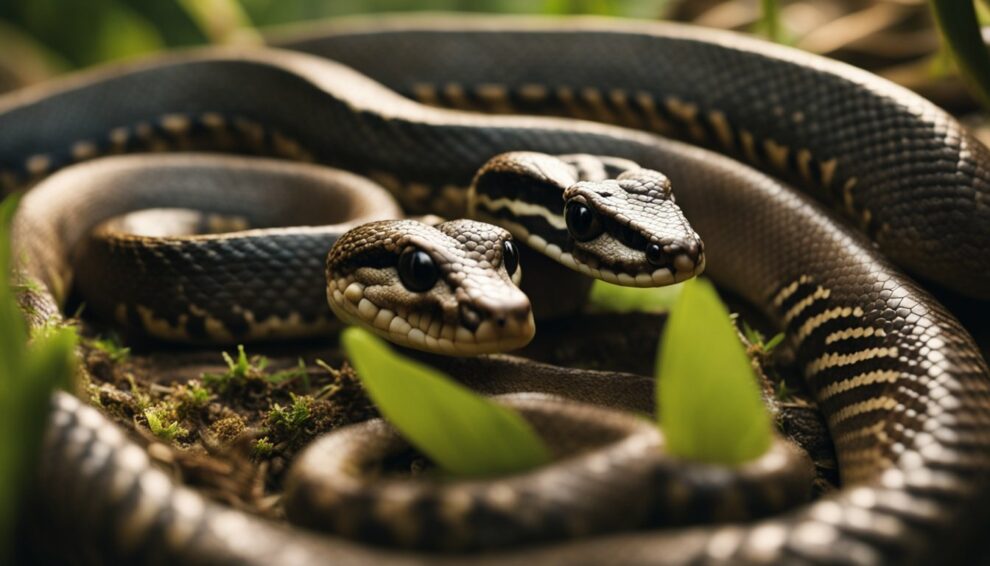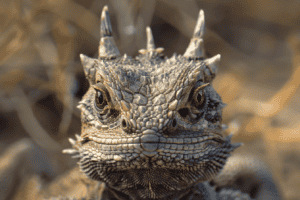Boa constrictors are well-known for their impressive size and strength, but there’s something about their birth process that might catch you by surprise.
Unlike many other snakes, which lay eggs, boas give birth to live young. This rare reproduction method in the reptile world is called ovoviviparity.
Can you imagine these large snakes carrying their babies inside and then giving birth to fully formed little snakes?

When a mother boa constrictor gives birth, she does not lay eggs in a hidden nest, but rather, her babies emerge from her body encased in a thin membrane.
Each baby snake must break through this layer to take its first breath.
Imagine a slithering bundle of up to 60 newborns, each one squirming out into the world, ready to explore and grow.
It’s a spectacular start to life that showcases the diverse and amazing ways life thrives on Earth.
This live birth process benefits the snakelets, as being born alive means they do not have the vulnerability of an egg lying in wait for predators.
They’re ready to move, equipped with instincts, and have a mother nearby for protection in their early hours.
Did you know that a baby boa constrictor is called a ‘snakelet’?
From the moment they’re born, these snakelets are independent, embarking on their own journeys without any further help from their mother.
Isn’t nature incredible in the ways it equips young animals for survival?
Boa Constrictors’ Reproduction
Boa constrictors demonstrate a unique mode of reproduction among snakes.
Unlike many reptiles laying eggs, these serpents give birth to live young.
Understanding their breeding habits and mating process unveils the intricacies of their lifecycle.
Unique Breeding Habits
The reproductive cycle of the boa constrictor is marked by viviparity, which means they give birth to live young, a trait relatively rare among snakes.
Female boas develop eggs internally and give birth to fully formed, independent young.
Typically, a female boa will give birth to 10 to 65 live neonates after a gestation period ranging between 100 to 150 days.
These newborn snakes are self-sufficient from the moment they are born, equipped to climb and hunt, showcasing nature’s adeptness in nurturing survival instincts from the start.
Mating Process
During the mating period, which usually takes place between the months of April and August, male boas will seek out females by sensing pheromones in the air.
Courtship begins with the male wrapping around the female and rubbing his body against hers to signal his readiness to mate.
Copulation can last from a few minutes to several hours, and during this time, the male will introduce his hemipenes into the female’s cloaca to fertilize her eggs.
Did you know that female boas have the ability to store the male’s sperm for several months until they decide the time is right for fertilization?
This remarkable adaptation ensures that the young are born during favorable conditions, optimizing their chances of survival.
Gestation and Birth

In the world of Boa Constrictors, becoming a parent is quite the experience.
These snakes go through a period of gestation before the mother gives birth to live young, a rarity among reptiles.
Gestation Period
The gestation period in Boa Constrictors is something that could really make you wonder about the incredible processes of nature.
It typically lasts between 100 to 150 days. During this time, the female boa will carry her developing offspring inside her body.
The fertilized eggs, instead of being laid and incubated externally, remain within her, where they’re nurtured and protected.
Live Birth Phenomenon
Have you ever imagined a snake becoming a live-birth-giving parent? Boa Constrictors do just that!
They’re among the few snake species that give birth to live young, bypassing the egg-laying stage completely.
A mother Boa Constrictor can give birth to a litter ranging from 10 to 65 snakelets at a time.
These tiny replicas emerge encased in a thin, membranous sac that they must break out of—a task they’re ready for from the very moment of birth.
This live birth adaptation is a curious trait, especially considering the fact that most snakes lay eggs.
Newborn Boa Constrictors

When boa constrictors are born, they emerge encased in a thin, transparent membrane with their first act of independence being to break free of this birth sac.
They are fully formed, self-reliant from the start, and their survival hinges on a rapid adaptation to their surroundings.
Early Life Stages
The initial phase in the life of a newborn boa is marked by the shedding of their birth skin, which typically occurs within a week or two.
Unlike oviparous snakes which hatch from eggs, these neonates, averaging 15 to 20 inches in length, enter the world live.
They arrive with a prehensile tail and instinctual hunting capabilities.
As ambush predators, young snakes quickly learn to master camouflage and the art of stealth.
These skills are vital for securing meals consisting mainly of small rodents, lizards, and birds.
Growing at a robust rate, they can double their length in a matter of months under optimal conditions.
Their ability to thermoregulate by alternating between sun-drenched basking spots and cool shade is critical to their digestion and overall growth.
Survival Challenges
Despite their readiness for independent life, newborn boa constrictors face numerous threats.
Predation is a prominent danger, with birds of prey, larger snakes, and various mammalian carnivores always on the lookout for a vulnerable young snake.
Human interference also plays a role in the survival of these creatures, as habitat destruction and the illegal pet trade place immense pressure on populations.
A fascinating aspect of these newborns is their inherent survival instinct that facilitates behaviors such as hiding and fleeing to avoid detection.
Environmental factors such as temperature and humidity are yet another hurdle for these saplings of the serpent world.
They are particularly sensitive to extremes in their habitat, which can lead to mortality if not managed.
It’s up to these young individuals to navigate these challenges to mature into the impressive constrictors they are destined to become.
Frequently Asked Questions

When you spot a Boa Constrictor, you might wonder how these magnificent reptiles start their life.
This section answers some burning questions about the early days of these incredible snakes.
What’s the number of baby Boas a mother can have at one time?
A mother Boa Constrictor can give birth to anything from 10 to 65 babies in a single litter.
The number varies depending on factors like the mother’s size and health.
Are newborn Boa Constrictors independent or do they need their mom?
Right from birth, newborn Boa Constrictors are quite independent.
They come out fully formed and ready to move around, so they don’t require any direct care from their mother.
How do baby Boas get ready to face the world on their own?
Baby Boa Constrictors prepare for the world instinctively.
They can fend for themselves almost immediately, hunting small prey like rodents or birds using their intrinsic hunting skills.
What special adaptations do Boa Constrictor babies have for survival?
Born with camouflaged patterns and colors, baby Boa Constrictors blend into their surroundings, a natural defense against predators.
Alongside their ability to constrict prey, these adaptations give them an edge in the wild.
How long does it take for a baby Boa to become a full-grown snake?
Boa Constrictors reach their full size at around 3 to 4 years of age, but they continue to grow slowly throughout their life, which can be up to 20-30 years in the wild.
Do Boa Constrictors nurture their young ones after birth or leave them to fend for themselves?
Mother Boa Constrictors do not nurture their young.
Once born, the baby snakes are left to survive on their own, equipped with all the necessary tools to start their independent lives.









